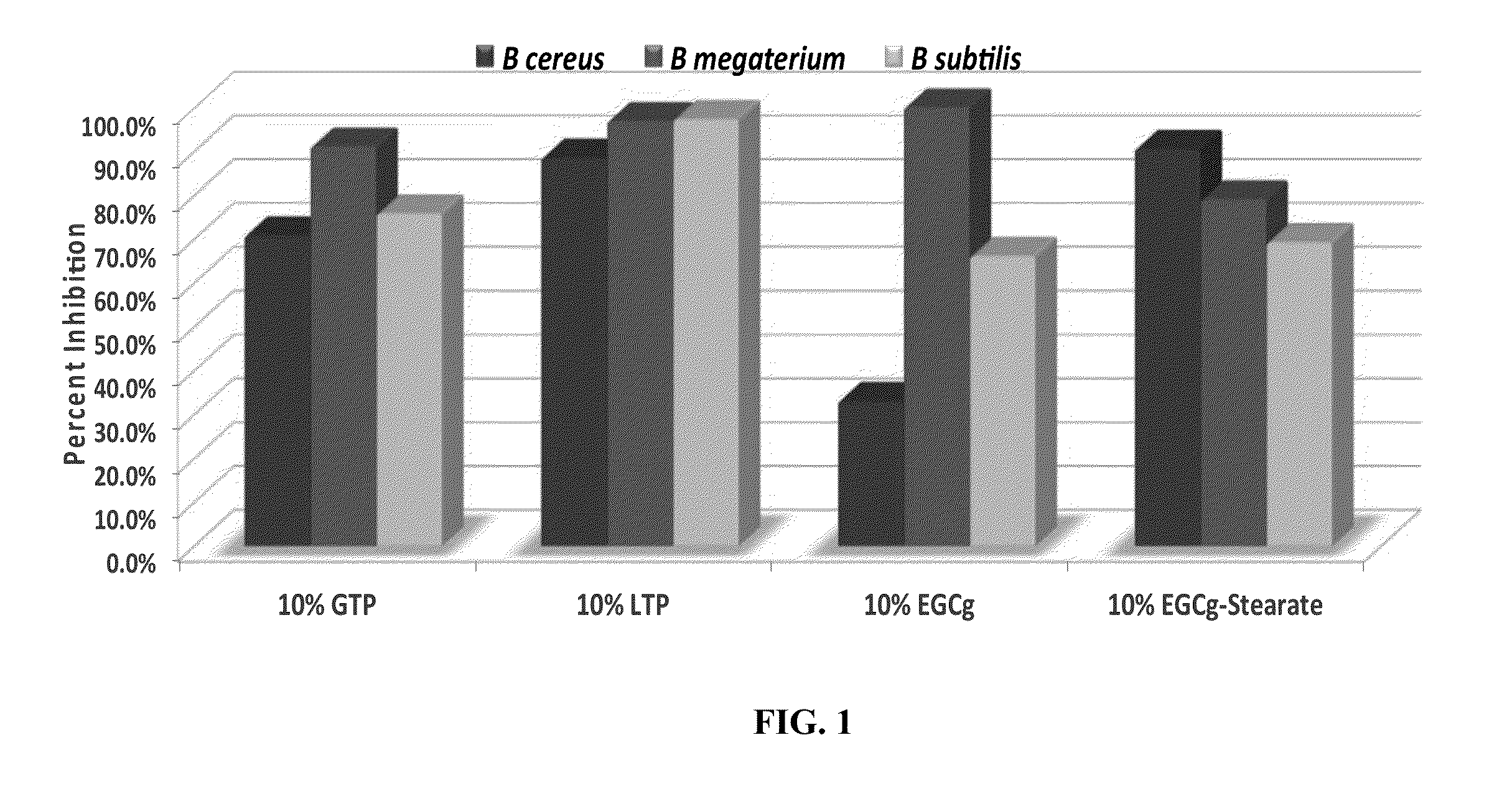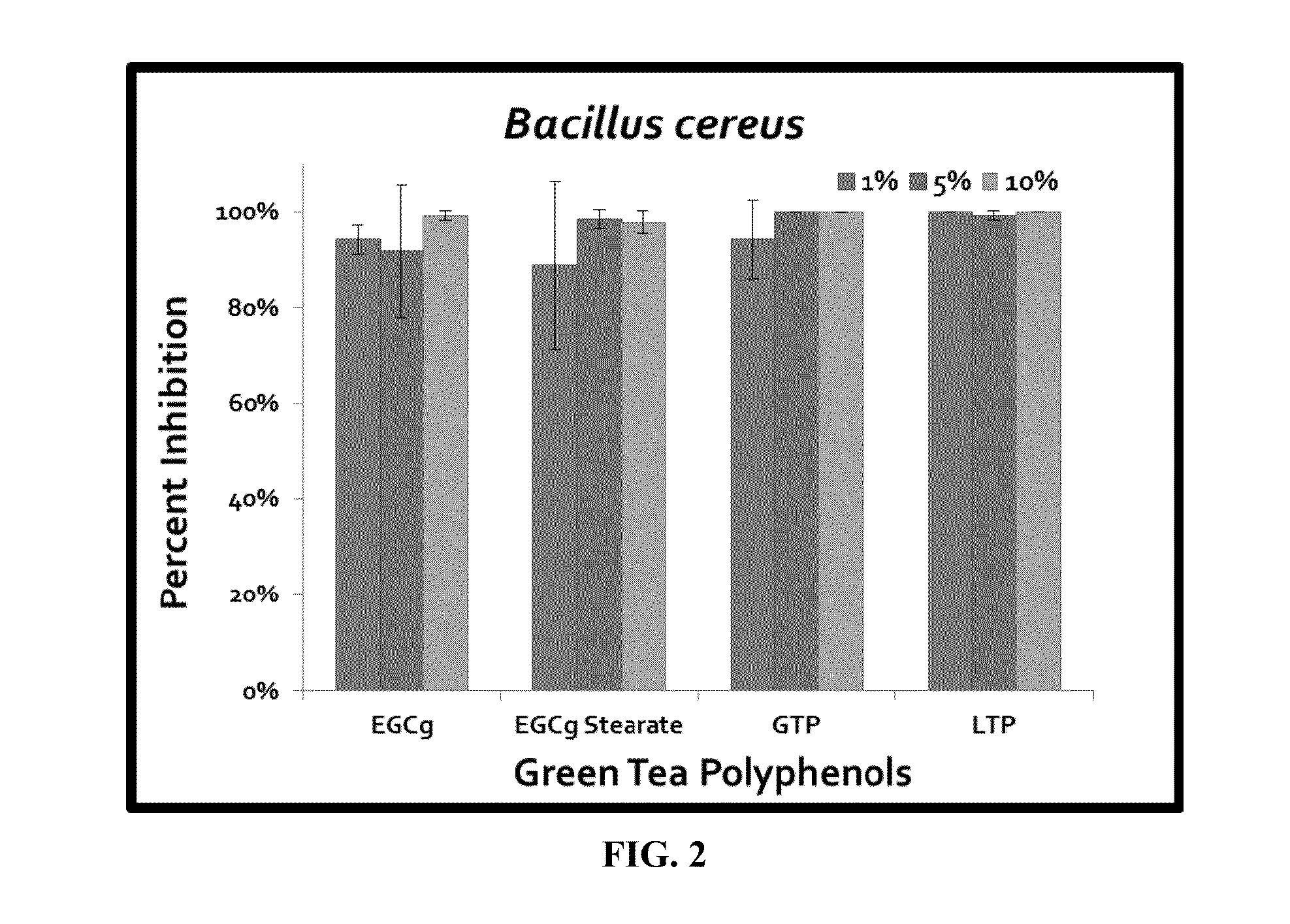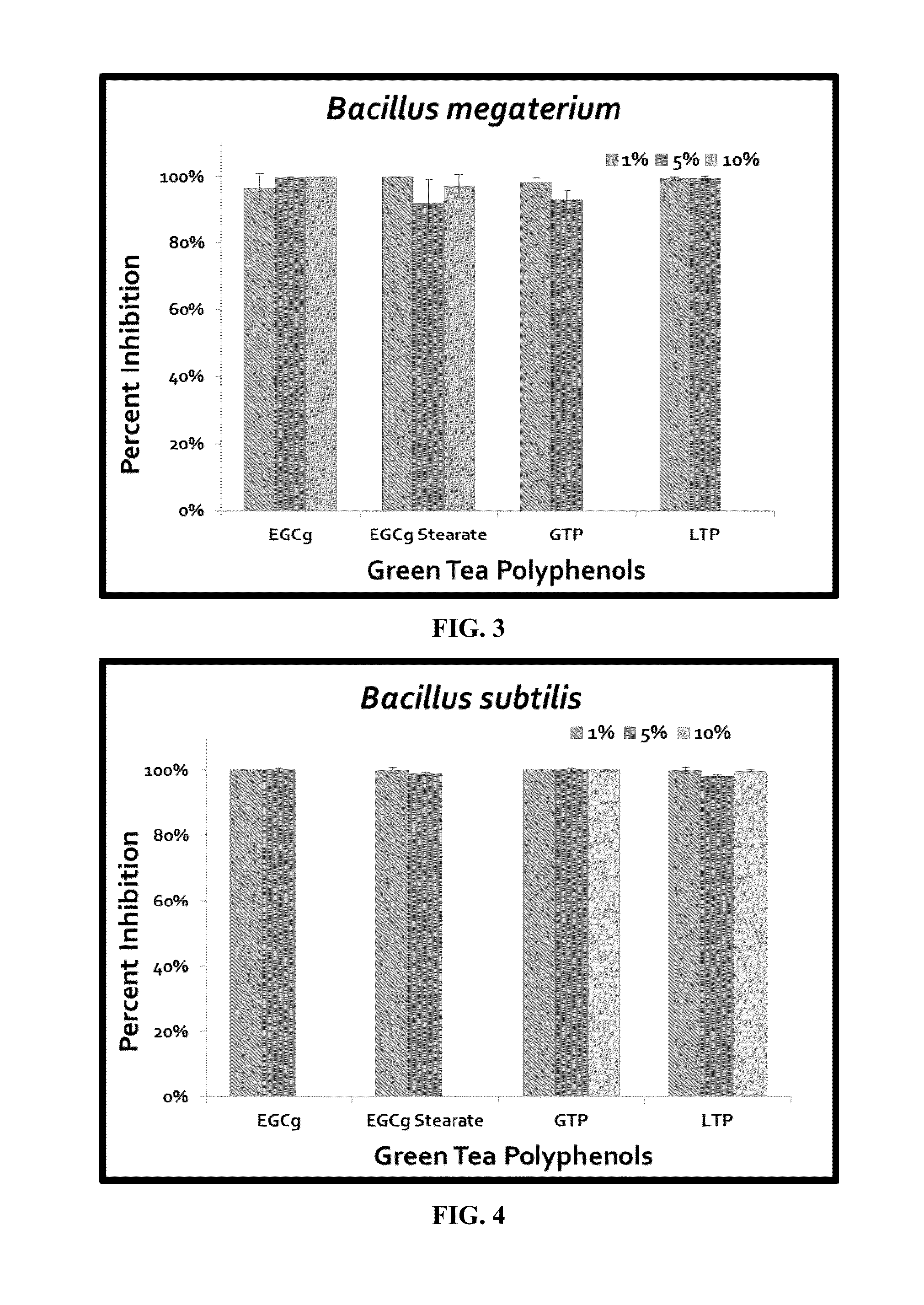Compositions and methods for inhibiting endospores using green tea polyphenols
a technology of endospores and polyphenols, which is applied in the field of compounding and preventing endospores using green tea polyphenols, can solve the problems of ineffective agents, difficult inactivation or other ways to reduce the active population of spores, and difficult resistance, etc., and achieve the effect of reducing or preventing spore reactivation
- Summary
- Abstract
- Description
- Claims
- Application Information
AI Technical Summary
Benefits of technology
Problems solved by technology
Method used
Image
Examples
examples
Materials and Methods
[0244]Bacillus megaterium spores were induced through process of starvation for 2 hours in sterile deionized water and then heated at 90° C. for 20 minutes. The heated samples were treated with 10% of EGCG or EGCG-ester for 1 hour or 24 hours respectively and then plated onto nutrient agar plates with a countable range of 150 to 300 CPU (colony counting unit). The non-starved cells and starved cells without treatment were used as controls.
Results
[0245]Green Tea is derived from the leaves of the plant Camellia sinensis. These leaves contain antioxidant ingredient catechins also known as green tea polyphenols (GTPs). Out of all catechin compounds, EGCG has powerful anti-tumor, anti-viral, and anti-bacterial activities. In this study, EGCG and EGCG-ester prepared by esterification of GTP were used to study their effect on endospores of Bacillus megaterium.
[0246]The viability of Bacillus megaterium spores in 10% EGCG or EGCG-ester treated samples showed 90% inhibit...
example 2
Green Tea Polyphenols Inhibit Endospore Germination
Materials and Methods
[0247]Heated samples were treated with 1, 5, 10% of GTP (mixed green tea polyphenols), LTP (lipophilic green tea polyphenols), EGCg (epigallocatechingallate), or EGCg-Stearate for 2 hours, diluted and plated onto nutrient agar plates, and incubated at 37° C. for 24 hours. Non-starved cells and starved cells without treatment were used as controls.
Results
[0248]Germination, specifically outgrowth, of purified endospores in Bacillus cereus, B. megaterium, and B. subtilis was studied by treating the bacteria with four different green tea polyphenols: GTP (mixed green tea polyphenols), LTP (lipophilic green tea polyphenols), EGCg (epigallocatechingallate), and EGCg-Stearate.
[0249]A comparison of spore crop in various media is provided in Table 1.
TABLE 1Comparison of Spore Crop Media.Type ofDay 7 (% spores)AgarHem 1Hem 2Hem 3Hem 4Hem 5Hem AvgTryptic Soy68.9%64.9%68.7%67.7%69.7%68.0%Nutrient*93.8%96.2%97.1%100.0%95.5%9...
PUM
| Property | Measurement | Unit |
|---|---|---|
| Temperature | aaaaa | aaaaa |
| Temperature | aaaaa | aaaaa |
| Fraction | aaaaa | aaaaa |
Abstract
Description
Claims
Application Information
 Login to View More
Login to View More - R&D
- Intellectual Property
- Life Sciences
- Materials
- Tech Scout
- Unparalleled Data Quality
- Higher Quality Content
- 60% Fewer Hallucinations
Browse by: Latest US Patents, China's latest patents, Technical Efficacy Thesaurus, Application Domain, Technology Topic, Popular Technical Reports.
© 2025 PatSnap. All rights reserved.Legal|Privacy policy|Modern Slavery Act Transparency Statement|Sitemap|About US| Contact US: help@patsnap.com



